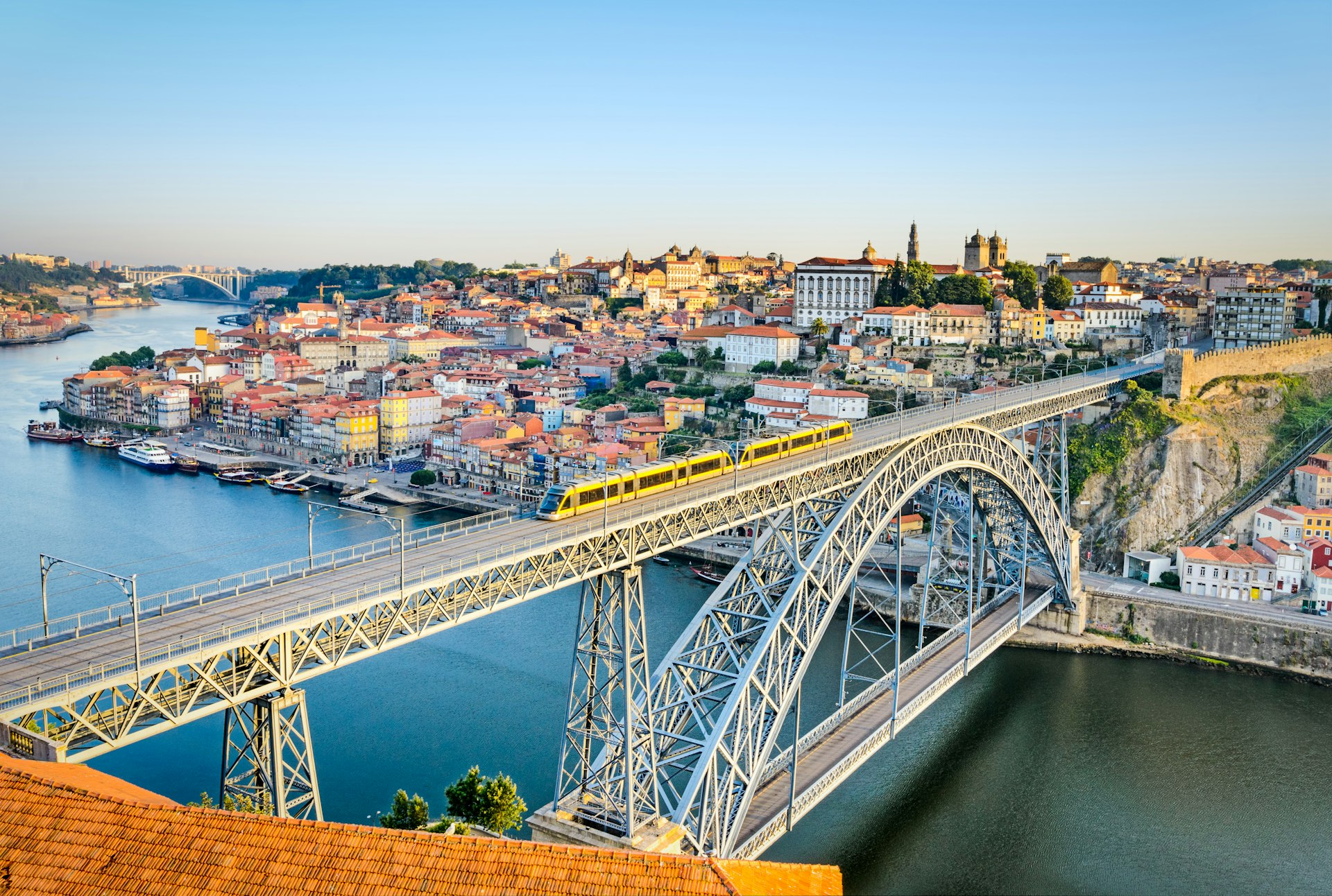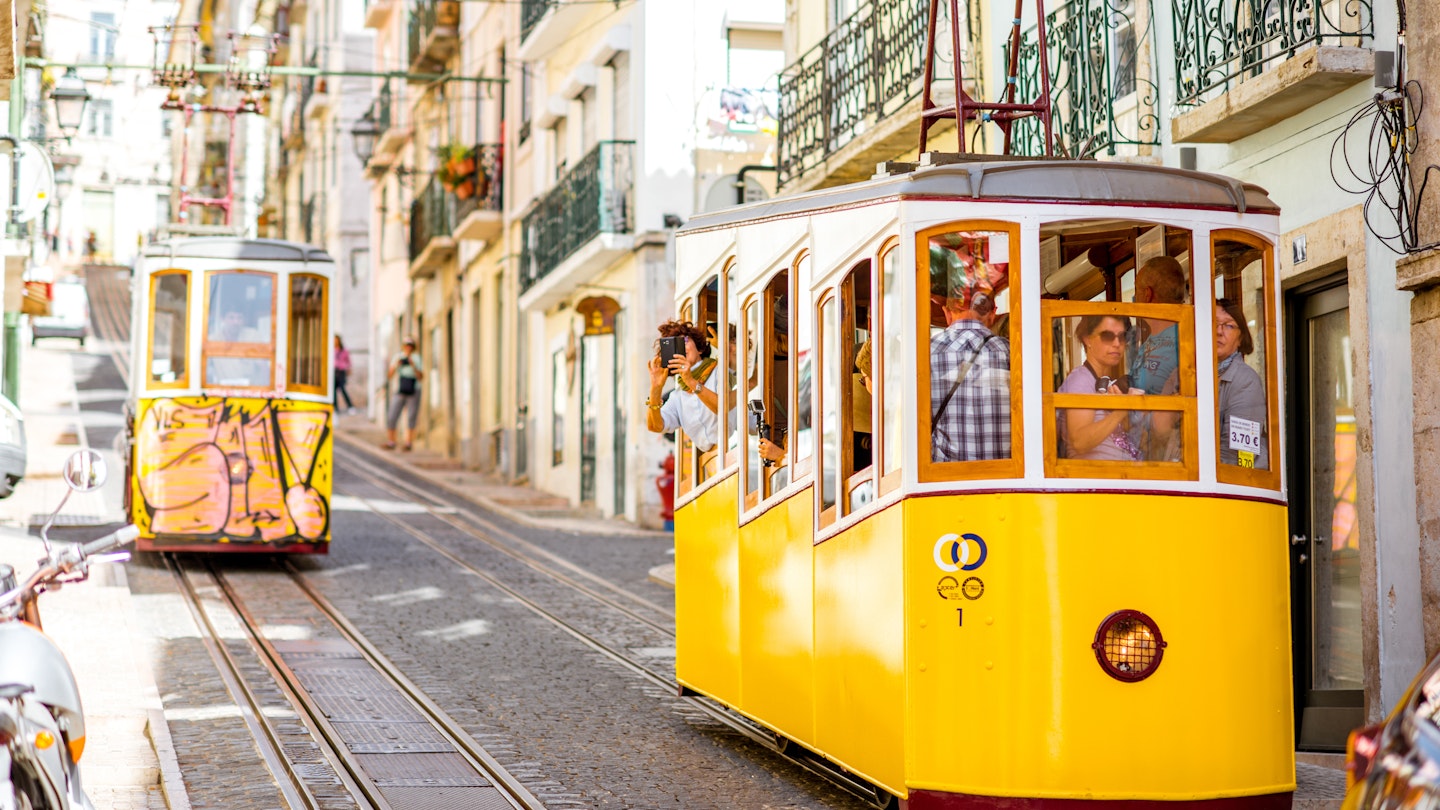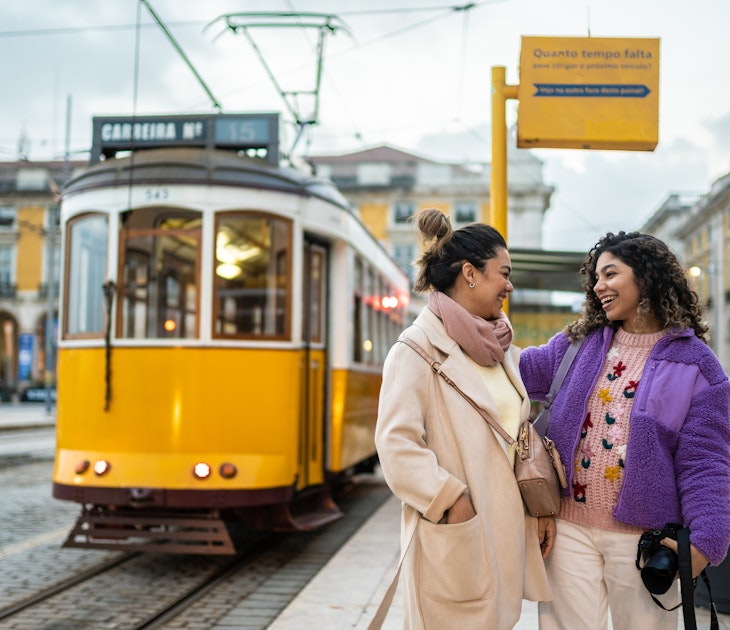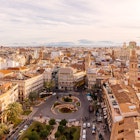Anchoring the southwest corner of Europe, Portugal is a relatively easy country to navigate. You’ll find a good train network and buses to get you to places where the rails don’t reach. Speedy toll roads can carry you quickly between major cities, though you can also take the slow, scenic (and free) back roads to get you from point A to point B.
What’s the best way to get around Portugal? All that depends largely on your own travel plans. Sticking to the main cities? Go for the train. Heading to the beach? The Vamus Algarve bus network has you covered. Exploring remote parks and nature reserves? You’re going to need a car. Below, you’ll find a run-down of the best ways to get around Portugal, along with some (admittedly subjective) guidance on transport experiences you shouldn’t miss.

Enjoy the scenic journey aboard the train
Portugal has a decent railway network that connects major cities and towns across the country. Although trains don’t go everywhere, journeys on board are affordable, comfortable, convenient, and often the most scenic way to travel. Trains connect popular tourist hotspots, including Lisbon, Faro, Lagos, Porto, and Coimbra.
The country’s rail network is headed by CP (Comboios de Portugal), which has handy rail network maps online. They run four main types of long-distance service:
- Regional (R): slow trains that stop almost everywhere;
- Interregional (IR): faster services that skip the smallest stations;
- Intercidade (IC): express trains that tend to stop only at big cities;
- Alfa Pendular Deluxe: marginally faster than express trains and much pricier.
Only two lines to Spain operate: the Celta, a train that runs daily between Porto and Vigo, and a line from Lisbon to Badajoz, where you can change to onward services to Madrid. There are no international trains in the south.
Lisbon and Porto have their own urbano (suburban) train networks. Lisbon’s network extends to Sintra, Cascais, Setúbal and up the lower Tejo valley.
Porto’s network takes the definition of “suburban” to new lengths: its network extends as far as Braga, Guimarães, and Aveiro. Urbano services also travel between Coimbra and Figueira da Foz.
Trains can be booked online via the official CP website, via the CP Portugal app, or at stations throughout the country. You can reserve Intercidade and Alfa Pendular tickets up to 30 days ahead, though you’ll usually have little trouble booking a seat for the next or even the same day. Other services can only be booked 24 hours in advance.
Take note that children under age four travel free, and those ages four to 12 go for half price. Additionally, travelers aged 65 and over can get 50% off any service with a valid ID. Travelers aged 25 and under also receive a 25% discount.

Take the bus to visit more towns and for getting around the Algarve
Slower and often cheaper than trains, buses are great for visiting smaller towns and villages (particularly away from the coast) not served by the rail network.
A host of small private bus operators, most amalgamated into regional companies, run a dense network of services across the country. Among the largest are Rede Expressos and Rodonorte. Southern Portugal has a new bus network called Vamus Algarve, with service reaching just about every part of the Algarve.
Bus services fall into three main categories:
- Carreiras: marked “CR,” these are slow services, stopping at every crossroads.
- Expressos and Rápidas: Comfortable, fast buses. The former tends to run between major cities, the latter around specific regions. These tend to be the most popular with tourists.
- Alta Qualidade: A fast, deluxe category offered by some companies.
Even in summer, you’ll have little problem booking an expresso ticket for the next or same day. By contrast, local services can thin out to almost nothing on weekends, especially in summer when school is out. For accurate timetable and fare information, visit a ticket desk at the bus station, which you’ll find in bigger towns.

Explore the backroads of Portugal by car or motorbike
Exploring Portugal with your own vehicle allows you to roam freely without being bound to the public-transport schedule. The country’s network of estradas (highways) is continually being upgraded and expanded, with main roads paved and in generally good condition. Driving can, however, be tricky in Portugal’s small walled towns, where roads may taper to donkey-cart size before you know it, and fiendish one-way systems can force you out of your way.
Renting a car in Portugal is relatively straightforward, with rental outfits found in major towns, cities, and larger airports like Lisbon, Porto, and Faro.
Scooters can be rented in larger cities and all over the coastal Algarve. Prices run around €40 per day, though you can get big discounts for multi-day rentals. There are also a few motorcycle rental outfits; prices start at €70 per day.
Don’t bother flying
Flights within mainland Portugal are expensive and, for the short distances involved, not really worth considering. Nonetheless, TAP has multiple daily Lisbon–Porto and Lisbon–Faro flights year-round, all less than an hour. For Porto to Faro, change in Lisbon.

Pedal through stunning Portuguese landscapes by bicycle
Even though there are few dedicated bicycle paths, cycling is popular in Portugal. Possible itineraries are numerous in the mountainous national and natural parks of the north (especially Parque Nacional da Peneda-Gerês), along the coast, or across the Alentejo plains. Coastal trips are easiest starting from the north and heading south, following the prevailing winds. More demanding is the Serra da Estrela (which serves as the “mountain run” for the Volta a Portugal, a multi-stage road bicycle race). You could also try the Serra do Marão between Amarante and Vila Real.
Be aware that cycling conditions aren’t perfect everywhere, with cobbled streets in some old-town centers liable to jar your teeth loose if your tires aren’t fat enough; city cyclists should have wheels at least 38mm in diameter.
Rattle across Lisbon and Porto via tram
Hopping aboard one of Portugal’s old-school trams is a must-do experience. These vintage relics rumble through the narrow streets of Lisbon and Porto, offering a charming, inexpensive sightseeing tour of either city. Trams are often packed by mid-day – so opt for an early morning journey to secure your seat.
Accessible transportation in Portugal
Unfortunately, Portugal is not a user-friendly country for travelers with disabilities. Some train stations have ramps, others do not. Some trains also have interior steps making access difficult. In general, Porto is the best city for getting around if you have a wheelchair. Nearly all metro stations are fully accessible with ramps, elevators, and dedicated spaces for wheelchair users onboard metro trains. Lisbon has fewer elevators, and they are often out of service.
Note that before flying to Portugal, be sure to request MyWay service through your airline up to 48 hours before your departure time. MyWay provides service getting you through the airport – and sometimes off the plane (as not all planes in Portugal connect to the jetway, requiring access via stairs).
For more information, download Lonely Planet’s free Accessible Travel guide.












